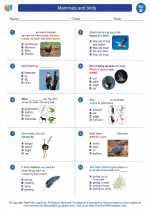Mechanical System
A mechanical system is a collection of components that work together to perform a specific task or function. These systems use the principles of physics and engineering to convert energy from one form to another in order to achieve a desired outcome.
Components of a Mechanical System
Common components found in mechanical systems include:
- Input: The source of energy or force that initiates the system's operation.
- Output: The result or action produced by the system.
- Mechanical Linkage: The parts that connect and transmit motion between components.
- Power Source: The provider of energy to the system, such as an engine, motor, or human effort.
- Control System: The mechanism that regulates and directs the system's operation.
- Load: The resistance or work that the system is designed to overcome or perform.
Types of Mechanical Systems
There are various types of mechanical systems, including:
- Simple Machines: Basic mechanical devices that help amplify or redirect force, such as levers, pulleys, and inclined planes.
- Complex Machines: Assemblies of multiple simple machines that work together to accomplish more complex tasks, such as engines, gears, and robotic arms.
- Biomechanical Systems: Mechanical systems found in living organisms, such as muscles, tendons, and skeletal structures.
Applications of Mechanical Systems
Mechanical systems are utilized in a wide range of applications, including:
- Transportation: Vehicles, bikes, trains, and airplanes rely on mechanical systems for propulsion and control.
- Manufacturing: Machinery and assembly lines use mechanical systems to automate production processes.
- Construction: Cranes, bulldozers, and other heavy equipment employ mechanical systems for lifting and moving materials.
- Biomechanics: Understanding the mechanical systems within the human body is crucial in fields such as sports science and rehabilitation.
Study Guide
When studying mechanical systems, consider the following key points:
- Identify the components and functions of the mechanical system being studied.
- Understand the basic principles of force, motion, and energy conversion that apply to the system.
- Explore real-world examples of mechanical systems and their applications in different industries.
- Examine the advantages and limitations of various mechanical systems in specific contexts.
- Consider how technological advancements have influenced the development of mechanical systems over time.
By mastering these concepts, you can gain a deeper understanding of how mechanical systems shape the world around us and contribute to technological innovation.
.◂Science Worksheets and Study Guides Second Grade. Mammals and birds
Study Guide Mammals and birds
Mammals and birds  Activity Lesson
Activity Lesson Birds & Mammals
Birds & Mammals  Worksheet/Answer key
Worksheet/Answer key Mammals and birds
Mammals and birds  Worksheet/Answer key
Worksheet/Answer key Mammals and birds
Mammals and birds  Worksheet/Answer key
Worksheet/Answer key Mammals and birds
Mammals and birds  Worksheet/Answer key
Worksheet/Answer key Mammals and birds
Mammals and birds  Vocabulary/Answer key
Vocabulary/Answer key Mammals and birds
Mammals and birds 

 Activity Lesson
Activity Lesson
 Worksheet/Answer key
Worksheet/Answer key
 Worksheet/Answer key
Worksheet/Answer key
 Worksheet/Answer key
Worksheet/Answer key
 Worksheet/Answer key
Worksheet/Answer key
 Vocabulary/Answer key
Vocabulary/Answer key

The resources above cover the following skills:
LIFE SCIENCE (NGSS)
Biological Evolution: Unity and Diversity
Students who demonstrate understanding can:
Make observations of plants and animals to compare the diversity of life in different habitats[Clarification Statement: Emphasis is on the diversity of living things in each of a variety of different habitats.] [Assessment Boundary: Assessment does not include specific animal and plant names in specific habitats.]